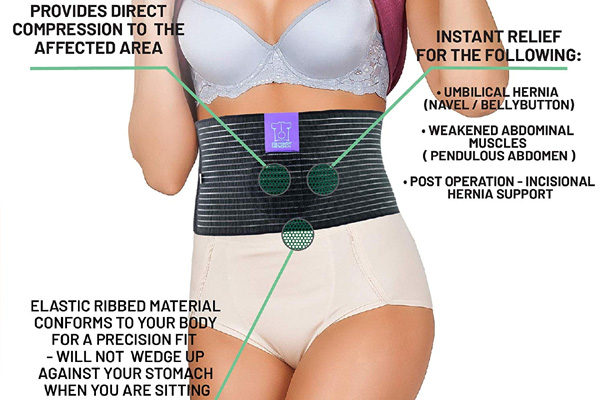Hernia Repairs
A hernia is the protrusion of an organ or part of an organ through an abnormal opening usually a defect in the walls of its cavity. Bulging most commonly occurs around the umbilicus, within the groin, or prior incision site.

A hernia is the protrusion of an organ or part of an organ through an abnormal opening usually a defect in the walls of its cavity. Bulging most commonly occurs around the umbilicus, within the groin, or prior incision site.

Hernia repair is indicated based on size and symptoms.Treatment surgery is the treatment choice for hernias is surgery, which can either be robot, laparoscopic or open. The operation entails opening the hernial sac and reducing the contents into the abdominal cavity then fixing the internal ring of the inguinal canal to prevent a repeat of the hernia occurrence. Herniorrhaphy can also be done to repair the defects of the abdominal wall. Often these two procedures are done together. Hernioplasty is an addition operation that can be done to the herniotomy to reinforce the internal inguinal ring with a mesh fiber.
It is also known as the exomphalos/ Omphalocele. It results from failure of part or all of the midgut to return to the coelom during early fetal life. It is classified as those that cause a fascial defect that is less than 4 cm (herniation of the umbilical cord) and those that has a fascial defect that is greater than 4cm. The good thing about umbilical hernias is that they rarely strangulate and most of them resolve spontaneously before the age of 3, therefore surgery is not necessary. After that age, if the umbilical hernia has not closed off on its own, surgery is indicated to repair the defect. Thus, the reassurance of the parents should be done, not just rushing into surgery. A primary herniorrhaphy is performed for small defects while other technical approaches such as staged closure, skin flap closure, non-operative therapy, and primary closure are used for large defects involving the herniation of the liver, spleen, stomach, pancreas, colon or the bladder.
The inguinal hernia is the result of the protrusion of the intestine into the inguinal canal and it is mainly seen in males because the inguinal canal is the path for testicular descent in the early years. It mainly results from congenital defects of the abdominal wall, anything that increases the intraabdominal pressure or weakened abdominal musculature such as collagen deficiencies. The inguinal hernia can be of two types, direct (common in the old people) and indirect hernias (common in young people). Any hernia can strangulate.
An incisional hernia is an iatrogenic surgical condition that comes about after an incomplete healing of a surgical wound or a weakened abdominal wall where the surgical incision had been made. It is mainly seen in postoperative patients who have had a surgery of the abdomen, especially of the peritoneum. It is associated with obesity, smoking and infection. Other influential factors for the development of the incisional hernia are choice of the suture the surgeon and also nutritional status. For instance, sutures such as the catgut have a higher incidence of the suture being self untying.
Any person with the clinical signs of a bulging abdominal wall mass that can be symptomatic or not and confirmed by ultrasound or CT scan imaging
Because this is a highly sensitive operation for especially obese patients, the doctor would recommend dieting to cut off some weight before the hernia repair is carried out. Smoking cessation and nutrition are crucially important as well.
You are required to show up to the health care facility about a day to the surgery. This will give the caregivers enough time to run further lab blood tests and other tests that might be required before the surgery.
This is mainly to assess the current status of the patient. The caregivers will still assess if you are fit for the surgery particularly to prevent the adverse effects of the anesthesia.
This will be done through a comprehensive history taken from the patient and physical examination.
The patient is then given prophylactic antibiotics before the surgery is done to prevent any infections. As of any surgical procedure that you’ll be required to be under general anesthesia, the patient is required to fast for about 8-12 hours to avoid complications of the anesthesia.
An intravenous line is required to feed the required drugs into the body system of the patient.
An adult can either be put under local anesthesia, general anesthesia or even the epidural for this operation. The three types of surgeries to correct the inguinal hernia strongly depend on the age status and the fitness of the patient.
This surgery offers speedy recovery to the patients, more so with the laparoscopic/robotic approach. Same-day discharge is feasible.
The patient is encouraged to ambulate early to prevent complications such as clot formation and enhancing a faster recovery process.
Thromboprophylaxis can be given in patients who are expected to have prolonged immobility postoperatively.
The dressings and the stitches on the patient are removed in a week.
Advice should be given to avoid any strenuous activities before complete healing and a diet that is protein-laden to facilitate the healing process and repair of the body tissues.
The patient should be fully well and return to normal functioning in about 2 months.
Hernia repair surgery is one of the most common surgeries done in the world. The surgery normally goes through successfully and easily without any complications. Patients are advised to avoid strenuous activities post-surgery like lifting weights and heavy items for about 6 weeks post the surgery.